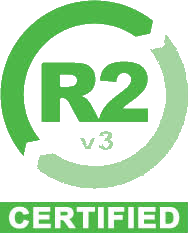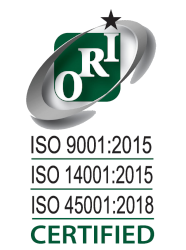Published on December 16, 2021, Updated on January 21, 2022
Aerospace Equipment Recycling and Decommissioning in Washington
The aerospace business has numerous facets, all of which rely on cutting-edge technology that is evolving at a rapid rate. From airport security and infrastructure to growing NASA programs, this business is continually changing, necessitating the disposal of a wide range of equipment. The aircraft sector includes many different sorts of players, each with its specific electronic equipment disposal requirements. We provide services to:
- Airplane manufacturers
- Guidance systems manufacturers and operators
- Air traffic control
- Airports
- Private space exploration companies
- Contractors serving military and civilian aviation
- Airport security systems
- NASA
- Airlines
- Military projects
When it comes to the correct disposal of electronic waste in Washington State created by the aircraft sector, there are many key challenges. These are some examples:
- Data security
- Environmental compliance
- Preventing the reintroduction of obsolete or damaged items into the market
- Cost-effectiveness
IT assets and power sources employed in aerospace projects are often vast in size and powerful. They may also include dangerous compounds. This sector must also adhere to a number of environmental and safety standards in Washington. Electronic trash from the aircraft sector might include computer and networking equipment, electrical circuits, power supplies, and other items. Its disposal is frequently subject to several rules, including environmental laws as well as particular security standards established by the NSA and the Department of Defense.




Electronic Equipment in Airports Washington State
Airports employ a wide range of technology, with applications such as security, scheduling, and tracking. Handheld and walk-through electromagnetic metal scanners are examples of security equipment. Other types of scanners screen luggage with X-rays. Airports are increasingly utilizing ion mobility spectrometry devices for more precise detection of even small levels of explosive chemicals. These can include cargo gateways, people portals, and portable gadgets.
A backscatter X-ray scanner or a millimeter-wave scanner is now available in many airports. All of these devices produce a digitally analyzed scan. As a result, in addition to the scanning device, other equipment would comprise computer systems and displays.
Another sector that is becoming increasingly reliant on technology is air traffic control. Controllers employ radar screens in addition to visually viewing planes through the tower window. There are other conflict alert systems that give automatic alerts when a jet approaches an occupied runway. Some airports have installed remote digital towers that collect data via cameras and microphones and broadcast it to a control center. Airports in Washington are increasingly incorporating integrated automated systems that track airplanes and show important data, allowing for more effective scheduling and routing. Radar and digital components are used in these systems.
Airports also employ a plethora of equipment aimed at simplifying the passenger experience. Aside from flight information displays, most airports feature terminals where travelers may check-in and print boarding passes. Airline and airport staff carry out their responsibilities using both specialist computers and regular office equipment.
Avionics
Many different types of electronic systems are used in spacecraft and airplanes. Navigation, communication, system administration, monitoring functions, and individual systems all make use of these components. Weather monitoring devices, flight recorders, anti-collision, and autopilot systems are all standard features of a conventional airplane. Satellite signals, radio signals, and inertial navigation systems can all be used by navigation systems. They also maintain track of the position automatically and display it on a monitor. Systems meant to monitor important processes such as fuel distribution and engine efficiency are often complicated, incorporating several types of sensors as well as a computer that analyzes data, adjusts functions, or sends an alert.
Avionics in military applications spans a wide variety of tactical functions. A number of sensors and platforms that combine data from them can be included in the equipment. Encryption is commonly used in communications systems to provide a high level of security. Radar, sonar, infrared devices, and other electro-optics may also be used. Electronic support measures and defensive aids are also used by military aircraft to evaluate threats and deploy countermeasures.
Because military systems must swiftly collect and analyze massive amounts of data, this industry is always exploring enhancements to better integrate and speed up streaming and data processing. As older generations of processors and sensors are retired, it is critical to ensure that these components are disposed of properly and securely.
Data Destruction for Optimal Security
The National Business Aviation Association cites an increase in worry about aviation data security as flight and communications technology becomes more digital and networked in Washington. In 2018 and 2019, the Center for Strategic and International Studies reports many important cyber events directed at airlines and associated companies. It is critical to partner with an electronic trash business that understands and efficiently solves your data security needs while completing electronic waste disposal, whether you are safeguarding your customers’ data or national security.
We provide multiple degrees of data deletion to ensure that the highest security standards are met in Washington:
Level 1: military-grade secure data erase for hard drives; portable data storage degaussing; DOD compatible.
Level 2: data wiping and degaussing; data destruction certificate detailing make, model, serial number, and manner of destruction; conforms with DOD 5220.22M and NIST 00-88.
Level 3: data wiping, degaussing, and physical destruction through stake punching; certificate of destruction; meets DOD 5220.22M and NIST 800-88 requirements.
Level 4: Compliant with DOD, NSA, and CSS 02-01 requirements; includes suitable in-house shredding and a certificate of destruction.
Choosing the Best Company to Handle Aerospace Industry Electronic Waste
You need to know that when electronic trash leaves your premises, it is handled safely, securely, and lawfully. Inquire about certification and handling protocols. Furthermore, you must ensure that the organization you are considering can manage your unique demands and is able to cope with the volume, materials, and level of data protection required for your project.
1 Green Planet certification include:
- R2:2013
- ISO:140001
- ISO 45001:2018
Our methods also meet the criteria of the Department of Defense and the National Security Agency. As a result, we are completely prepared to handle hazardous items, dispose of them, and recycle them in an ecologically friendly manner. From pick-up through disposal, we maintain a strict chain of custody. We work with your facilities on an individual basis to determine your needs and deliver the answers you require. You will receive a comprehensive report with all of the information you require for documentation and legal compliance. Please contact us to learn more about the services we provide near Washington.
Some of the Aerospace Equipment Managed by 1 Green Planet
- Aircraft Interface Devices (AID)
- Passenger service units
- Military training services and equipment.
- Cockpit displays
- Environmental control systems
- Aircraft Radomes
- Security Scanners
- Body Scanners
- In-flight entertainment displays
- Radar systems
- Avionics suites
- Autopilot & Radar Systems
- Flight Information Boards
- Aircraft Passenger and Crew Power
- Dual Sensor EVS
- Cockpit Controls & Panels
- Aerospace Electronics Systems
- Avionics I/O Computers
- IFEC Embedded System Hardware
- Approach & Navigational Aids
- FADEC engine controls
- Circuit boards
- Airfield Guidance Signs
- Drone Aircraft
- Communications & navigation systems
- Autopilot systems
- Aircraft SATCOM Antennas









